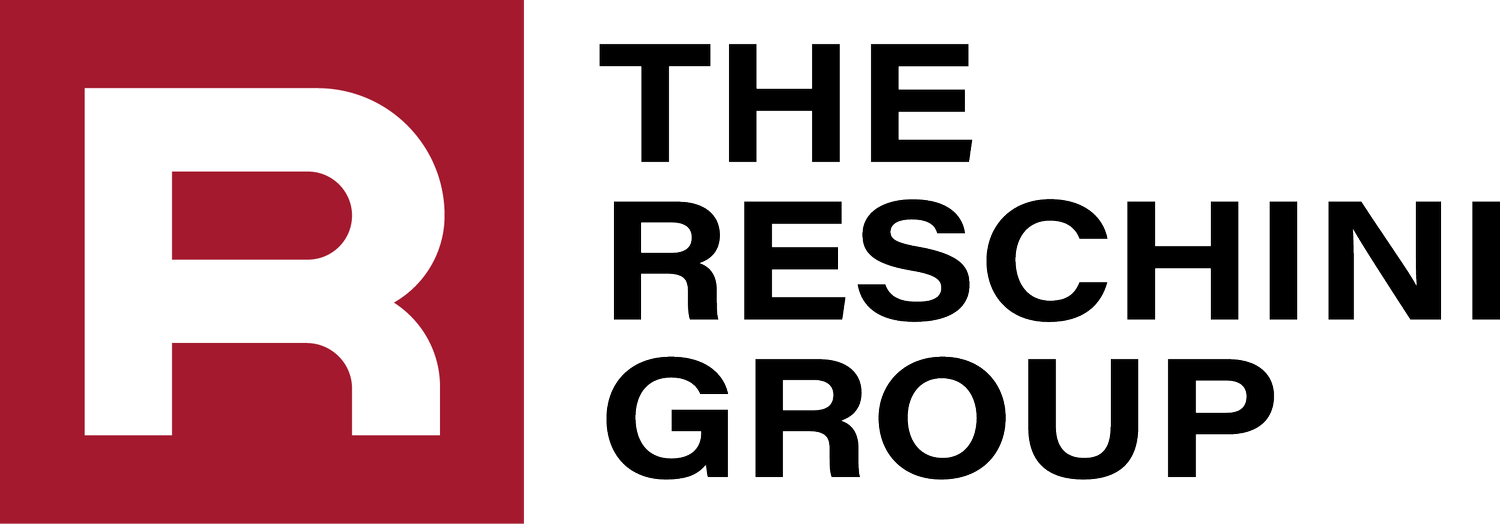Heed the Warnings: Surfside Condo and Pittsburgh Bridge
 On June 24, 2021, at approximately 1:22 a.m., a 12-story beachfront condominium in the Miami suburb of Surfside, Florida, partially collapsed, killing 98 people and injuring 11.
On June 24, 2021, at approximately 1:22 a.m., a 12-story beachfront condominium in the Miami suburb of Surfside, Florida, partially collapsed, killing 98 people and injuring 11.
The main contributing factor was identified as long-term degradation of concrete structural support in the ground-level parking garage under the housing units, due to water penetration and corrosion of the reinforcing steel. The problems had been reported in 2018 and noted as "much worse" in April 2021. A $15 million program of remedial works had been approved before the collapse, although no main structural work had been undertaken.On Friday, Jan. 28, 2022, at approximately 6:40 a.m., the Fern Hollow Bridge – which carried roughly 14,000 vehicles a day, connecting major areas of Pittsburgh, Pennsylvania – collapsed about 100 feet into a ravine. Miraculously, no one was killed but about 10 people received injuries. The bridge had received “poor” ratings for the past 10 years from inspectors, and was included in plans to be rehabilitated, but not for another five to seven years.As the shock wears off, the impact on victims and families processed, and the physical work of cleanup and reclamation begins, next come the questions about liability and who is responsible for the costs involved in the aftermath.In the case of the Surfside collapse, there may be issues surrounding the property insurance and the possibility of Director & Officer claims directed at the Condo board. Regarding the Fern Hollow Bridge, various municipal bodies and agencies may face insurance investigations and subsequent litigation. In each instance, warnings about potential failures of the respective structures had been issued, and corrective plans made, but none had been performed in time to prevent a collapse.One thing may be more certain than anything else, however – claims of this scope will trigger enhanced underwriting by the marketplace.Your organization may not necessarily face the same level of disaster as Surfside or Fern Hollow, but there may be identifiable risks in play nonetheless. Once they have been identified and a plan to alleviate them has been developed, it is wise to implement those plans sooner than later, as much as practically and financially possible.For more information on these matters and how to properly prepare, contact the professionals at The Reschini Group today.
Copyright 2022 The Reschini GroupThe Reschini Group provides these updates for information only, and does not provide legal advice. To make decisions regarding insurance matters, please consult directly with a licensed insurance professional or firm.
Benefits Blog: Five Ways to Save on Healthcare Costs

It’s no secret that healthcare expenses have been on a steady, and costly, climb for the past two decades. Price hikes of 6.5 percent are projected in 2022, with the ongoing COVID-19 pandemic playing a significant role in those increases. This fact of financial life means employers must think both strategically and creatively about how to lower their health benefits expenses in 2022. Here are five ways to help achieve savings:
- Control Drug Spending - Drug prices rise faster than any other medical service or commodity, with costs now 33 percent higher than in 2014, according to GoodRx. Employers can educate employees on the price differences between name-brand and generic medications, and encourage using generics to save money while still receiving the same quality treatment.
- Encourage Active Benefits Participation – This includes encouraging employees to improve their health literacy, research treatments, and price shop. By seeing specific prices for procedures and other services, employees can educate themselves before making costly health decisions.
- Offer Savings Accounts with Carryovers - Health savings accounts (HSAs), flexible savings accounts (FSAs), and other tax-advantaged savings account options empower employees to control their own spending and improve their health literacy. Many accounts allow for fund carryover year to year, encouraging more contributions. Since many employers match contributions up to a limit, more money added to these accounts means greater tax savings for everyone.
- Embrace Virtual Health Options - A major takeaway from the pandemic has been the expansion of telehealth services, allowing individuals to connect with health professionals quickly, safely, and less expensively. Employers adding telehealth services into their plan expand access to care and lower expenses for everyone.
- Consider Plan Funding Alternatives - A more drastic option for reducing health costs is restructuring how plans are funded. For instance, a self-funded plan may be more cost- effective than paying a monthly premium for a fully insured plan. Other options include level-funding or reference-based pricing models, each of which carries its own set of administrative rules and legal constraints. Funding decisions should not be taken lightly and should be based on several factors, such as size of an organization, risk tolerance, and financial stability, including employees' ability to take on large premium increases.
Selecting the best methods to contain healthcare costs depends on each organization’s unique capabilities. The Benefits Team at The Reschini Group can help sort out the right option for your particular situation. Contact us today to get a conversation started.Resources:Benefits Insights: Preventive CareBenefits Insights: Flexible Spending Accounts (FSA)Know Your Benefits: Strategies for Saving on Prescription Drugs
Copyright 2022 The Reschini GroupThe Reschini Group provides these updates for information only, and does not provide legal advice. To make decisions regarding insurance matters, please consult directly with a licensed insurance professional or firm.
Cover Your Bases: Lack of Controls May Limit Cyber Insurance Access
 Feeling lucky? Like to gamble?
Feeling lucky? Like to gamble?
It’s one thing to play a small-potatoes hunch on your smartphone as you watch your favorite professional team on television. It’s quite another to risk your entire business enterprise on something that never needed to be at risk at all – your cybersecurity protocols.
As the scope and expertise of malicious online operators grows, so is the insistence of insurers that their business clients have adequate cybersecurity controls in place. A growing consequence for those who have not installed and maintained such controls is that they cannot acquire the needed coverage.An industry leader recently conducted a study that concluded underwriters have adopted a “laser focus” on data security controls when looking at renewal risks, with “even greater underwriting scrutiny” of those controls as time goes on. The desired preventative controls cited include:
- Multifactor authentication
- Remote desktop protocol
- Segregation of networks
- Encryption
Those without these protocols in place will be increasingly met either with a decline of coverage or rates increased as much as 200 percent or even higher, according to the report. The threat of hackers successfully breaching cybersecurity protections has become such an issue for businesses, that even best-in-class risk managers – who have all preferred protections in place – may still see their premiums increase, but at a much lower rate.So play those little parlays on your phone all you like. But don’t leave your entire business enterprise open to such a huge bet. Survey your cybersecurity protections and make sure they’re in place and working.For more information, contact the professionals at The Reschini Group today.
Copyright 2022 The Reschini GroupThe Reschini Group provides these updates for information only, and does not provide legal advice. To make decisions regarding insurance matters, please consult directly with a licensed insurance professional or firm.Source: www.commercialriskonline.com/buyers-without-security-controls-risk-cyber-insurance-refusals-warns-gallagher-report/
How Safe is Safe?: The Impact of COVID on Employer Practices Liability
 In addition to the multiple and myriad changes already introduced to the business community by COVID-19, employers may now add possible increased liability and costs, perhaps ironically due to policies instituted to help stem the spread of the virus.
In addition to the multiple and myriad changes already introduced to the business community by COVID-19, employers may now add possible increased liability and costs, perhaps ironically due to policies instituted to help stem the spread of the virus.
According to a 2021 report conducted in part by the Insurance Information Institute, employers need to be aware of the impact of the pandemic, particularly a shift in the burden of proof onto the employer for certain types of claimants and the changing exposure from people working from home.Workers compensation saw five consecutive years through 2019 where that line of business posted an underwriting gain, but the institute-sponsored study said that trend could change with COVID-19. Employer practices liability insurance (EPLI) – separate from workers compensation – has the potential to feel an impact from the pandemic, as well.Mask-wearing mandates, vaccination or regular COVID testing requirements, increased flexibility and the associated variables of home-based work, plus similar pandemic safeguards, may fall prey to varying levels of adherence.This lack of clarity has the potential for coverage-related issues, should employees become infected and require ongoing treatment for the virus. Similarly, this uncertainty feeds into the increased premium costs for employers to adequately protect their businesses.As new variants of the COVID virus develop and spread – even as vaccines become more refined and effective – the pandemic will continue to have wide, deep, and continuous ripple effects on all aspects of business, including EPLI and workers compensation insurance.For more information on these matters and how to properly prepare, contact the professionals at The Reschini Group today.
Copyright 2022 The Reschini GroupThe Reschini Group provides these updates for information only, and does not provide legal advice. To make decisions regarding insurance matters, please consult directly with a licensed insurance professional or firm.Source: https://www.iii.org/press-release/recession-pandemic-to-affect-p-c-underwriting-results-new-triple-i-milliman-report-shows-081320
Holding the Door Open for a Thief: Controlling Social Engineering Online
 A professional hacker – who has gone straight and now goes by the job title of “Ethical Intruder” – lays out the truth with this simple statement: “Take it from a hacker, we are not trying to break in through your next-generation firewall when we can simply ask your users for credentials.”
A professional hacker – who has gone straight and now goes by the job title of “Ethical Intruder” – lays out the truth with this simple statement: “Take it from a hacker, we are not trying to break in through your next-generation firewall when we can simply ask your users for credentials.”
The sloppy, ill-informed, or unthinking release of credentials – the user names and passwords that permit access to your cyber files online – by employees or vendors is the digital equivalent of holding the door open for a thief to stroll into your sensitive operations with little or no resistance. In the parlance of cyber security, the ways in which legitimate users either control or surrender control of their credentials is known as “Social Engineering.”Social Engineering typically is seen within organizations as either an IT issue or the responsibility of Human Resources. At its core, Social Engineering is a behavioral and awareness issue that hackers know is the easiest and quickest way to crack a cyber defense and avoid detection.This has become an even more prevalent problem during the COVID-19 pandemic. Attackers have increased use of their predatory skills against unwitting employees, who simultaneously have become more susceptible to clicking on or downloading files by providing their credentials on nearly anything related to the pandemic.Entering this commonplace, yet incredibly valuable, information without giving a second thought as to who else might be watching can spell real trouble down the line.It becomes incumbent on employers to educate and enforce standards regarding the unauthorized or uncontrolled use of employee credentials. This single step can actually become one of the most effective ways to convey the very real threats that exist, and to tighten up the business’ cyber security protection.
Copyright 2021 The Reschini GroupThe Reschini Group provides these updates for information only, and does not provide legal advice. To make decisions regarding insurance matters, please consult directly with a licensed insurance professional or firm.Cybersecurity Resources from The Reschini Group
- Risk Insights - Social Engineering reinforces the information in this article and provides resources for you to share with you staff: Risk Insights - Social Engineering
For more information on cyber security safeguards, contact The Reschini Group today.
Safety Can Be Fleeting: Maintaining a Safe Fleet Program
 Operating a fleet of vehicles remains a necessity for many businesses. Drivers climb into cars and trucks every day, occasionally using multiple vehicles for differing purposes. But do they know the expectations of their employers? What kind of training and instruction have they received? What are the rules about purchasing fuel? Is personal usage ever permitted? What about parking a company vehicle at their homes during non-working hours?
Operating a fleet of vehicles remains a necessity for many businesses. Drivers climb into cars and trucks every day, occasionally using multiple vehicles for differing purposes. But do they know the expectations of their employers? What kind of training and instruction have they received? What are the rules about purchasing fuel? Is personal usage ever permitted? What about parking a company vehicle at their homes during non-working hours?
A consistent fleet safety program means not only cost savings, but also reduced liability, improved employee satisfaction, and enhanced safety performance. While a program is best when tailored to the exact parameters of a specific business, here are some basic elements that every plan should include:
- Secure and promote the support and commitment of all levels of management.
- Issue written policies and procedures regarding all aspects of vehicle use related to the business, and ensure that all drivers have ongoing access to this information.
- Create a roster of all drivers, including those who drive on behalf of the business using fleet vehicles, personal cars and trucks, and rented vehicles.
- Screen and select drivers to create a reliable team of safe drivers as the key to ongoing fleet safety success. Adhere to clear and detailed hiring standards.
- Offer and record completion of training to all drivers, covering vehicles safety policies and procedures, including defensive driving.
- Formalize schedules and record keeping related to vehicle inspections, repairs, and maintenance, to avoid costly breakdowns and accidents due to faulty equipment.
- Manage drivers regularly, offering additional training where needed. Also manage accidents carefully to better understand areas of exposure and reduce the likelihood of future accidents.
The professionals at The Reschini Group can help your organization get a fleet safety program in place that works for your specific needs. Contact us to talk more about this important consideration.
Copyright 2021 The Reschini GroupThe Reschini Group provides these updates for information only, and does not provide legal advice. To make decisions regarding insurance matters, please consult directly with a licensed insurance professional or firm.Fleet Management Resources from The Reschini Group:
- Small Fleet Safety Overview which introduces resources available from The Reschini Group: Small Fleet Safety Overview
- Fuel Management Checklist that gives tips to better manage fuel usage: Fuel Management Checklist
Contact us to talk more about this important consideration.
The Reschini Blog: The Pros and Cons of PTO
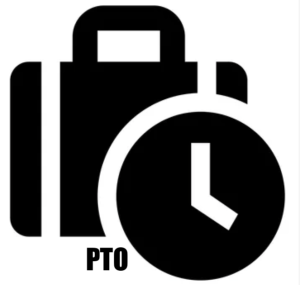 In the ever-shifting world of people management, the discretion over when time away from the job is justified has long been a source of friction and compromise. What is vacation? What is a sick day? What is an emergency? And who gets to make those final designations, the employee or the supervisor?
In the ever-shifting world of people management, the discretion over when time away from the job is justified has long been a source of friction and compromise. What is vacation? What is a sick day? What is an emergency? And who gets to make those final designations, the employee or the supervisor?
Paid Time Off, or PTO, offers a management strategy designed to alleviate or eliminate those points of possible contention, by changing the nature of the discussion. Under a PTO system, employees can “bank” a pre-determined number of hours – either by pay period, or by month, or annually – then draw from those hours for whatever purpose they want.In addition to simplifying the administration of an employee’s time away, PTO treats the employee as an adult capable of managing his or her time responsibly while not needing to worry about justifying the reason to a manager, or offer misleading information about taking a sick day when not actually being sick. Also, PTO keeps healthy employees from feeling “penalized” for not taking sick days available to them.Having a PTO system in place also makes a company more attractive to potential employees and increases loyalty among current employees, since time off is treated as a pool of hours, and not segmented into categories. This means, for example, that unused sick days can be automatically used to take more time for vacation.Of course, some caution must be taken with plans like PTO. Managers must watch so that employees do not abuse the system, taking unreasonable stretches of time away that impact the company negatively. Also, managers must still take responsibility for sending home an ill employee, who would prefer to stockpile time for vacation instead.But for organizations with a culture that welcomes flexible work schedules, PTO can be a great tool for all involved, as an attractive alternative to traditional vacation and sick time off.Contact the Benefits team at The Reschini Group to learn more.
Copyright 2021 The Reschini GroupThe Reschini Group provides these updates for information only, and does not provide legal advice. To make decisions regarding insurance matters, please consult directly with a licensed insurance professional or firm.
The Reschini Blog: Cyber Emergency Drills Build Vital Muscle Memory
 From days spent in Kindergarten, right up until your most recent fire drill at the office, we have been conditioned to respond to emergencies through repetition. Walk calmly to the nearest exit, gather in a pre-ordained spot, and account for everyone before notifying first responders of any missing associates. We have it all down, thanks to muscle memory.
From days spent in Kindergarten, right up until your most recent fire drill at the office, we have been conditioned to respond to emergencies through repetition. Walk calmly to the nearest exit, gather in a pre-ordained spot, and account for everyone before notifying first responders of any missing associates. We have it all down, thanks to muscle memory.
But what about a cyber emergency? What must be done in that scenario? Who is responsible for each function? How do we know we’re being effective? Those muscles may not have ever been stretched, but it’s imperative that this happen.Knowing what to do in the event of a cybersecurity incident is vital to protect sensitive and crucial data. Poorly coordinated responses not only have the potential to increase liability, but also can impact how insurance claims are paid following a breach.Properly preparing for a cyber emergency includes:
- Identifying who needs to be on the response team.
- Describing each person’s roles and responsibilities.
- Knowing how to categorize an incident.
- Determining how to track milestones and save key evidence.
While most states require certain businesses to have written policies, actually practicing them is the only way to make those policies meaningful. Once a plan has been established, the organization should run tabletop drills, presenting various scenarios and measuring how the team responds in real time. Only through this kind of positive, productive repetition can the required muscle memory be developed to blunt, contain, and successfully recover from a cyber security emergency.For more insurance-related information on this and other topics, contact the professionals at The Reschini Group.
Copyright 2021 The Reschini GroupThe Reschini Group provides these updates for information only, and does not provide legal advice. To make decisions regarding insurance matters, please consult directly with a licensed insurance professional or firm.
The Reschini Blog: Know What Your Equipment Is Worth
 “Catastrophe” in the property insurance industry denotes a severe natural or man-made disaster that is unusually severe. In the insurance industry, an event is designated a catastrophe when claims reach at least $25 million.
“Catastrophe” in the property insurance industry denotes a severe natural or man-made disaster that is unusually severe. In the insurance industry, an event is designated a catastrophe when claims reach at least $25 million.
But an event doesn’t have to be technically classified as a catastrophe for it to feel like one, when you suffer damage to your property and equipment. That’s why it’s always imperative to know the value of what you own long before it is ever damaged or lost.
Conducting an industrial appraisal remains a vital piece of the process in securing the proper level of insurance coverage. Establishing a fair and accurate “insured-to-value” ratio can spell the difference between an effective and orderly restoration of operations following an event, and being left with unanticipated expenses and follow-up claim resolution issues.Commercial property insurance policies generally cover the same causes of loss as most homeowners policies (damage from fire, windstorm, hail, riots, explosions) with some variation, depending on the coverages selected. Flood and earthquake damage are typically excluded.To put that into perspective, the Insurance Information Institute says that in the U.S. from 1997 to 2016, events involving tornadoes, including other wind, hail and flood losses associated with tornadoes made up 39.9 percent of total catastrophe insured losses, adjusted for inflation. Hurricanes and tropical storms were a close second at 38.2 percent of losses, followed by other wind/hail/flood (7.1 percent) and winter storms (6.7 percent). Terrorism and fires, including wildland fires, accounted for 5.9 percent and 2.0 percent of catastrophe losses, respectively. Civil disorders, water damage and utility services disruption combined represented about 0.2 percent of losses.The world – both from its natural dangers and those generated by people – can be a dangerous, hazardous place. Your equipment and property is always vulnerable to damage and loss. The Reschini Group can provide rough estimates on building valuations, locate experts in the appraisal arena, and secure the best possible coverage solutions.Because an event doesn’t have to fit the description of a catastrophe for it to feel like one, when it happens to you. Contact the professionals at The Reschini Group to learn more.
Copyright 2021 The Reschini GroupThe Reschini Group provides these updates for information only, and does not provide legal advice. To make decisions regarding insurance matters, please consult directly with a licensed insurance professional or firm.Source: https://www.iii.org/article/spotlight-on-catastrophes-insurance-issues
The Reschini Benefits Blog: Total Compensation Statements
 For many employees, the paycheck represents the sum total of how their employer compensates them. But in many cases, that’s not the complete picture.
For many employees, the paycheck represents the sum total of how their employer compensates them. But in many cases, that’s not the complete picture.
From the employer’s perspective, the benefits package offered to their workers may be quite substantial, but those same employees may not be aware of or may not understand the full scope of what they’re being offered. A Total Compensation Statement can help raise appreciation, morale, and loyalty among the members of a workforce.
A Total Compensation Statement highlights the monetary value of a company’s benefits package, including those perks that may be overshadowed by traditional benefits, to include information on:
- Salary
- Bonuses
- Commissions
- Stock options
- Stock grants
- Employee stock purchase plan
- Retirement plan
- Social Security contributions
- 401(k) matching contributions
- Paid time off
- Coverages for health, life and disability insurance
- Wellness rewards (e.g., discounts and cash bonuses)
By assigning a dollar amount to benefits that do not seem to have a tangible monetary value, employers can promote the idea of total compensation, beyond just a paycheck. Pulling back the curtain in this way can lead to higher retention rates among employees and can make the organization more competitive when talking with recruits during the hiring process.Committing to providing Total Compensation Statements will require some investment of time and resources to gather and present this data, but the return on this investment can be more than worth the effort.Contact the Benefits team at The Reschini Group for more information.Here is a resource for total compensation:Total Rewards - Compensation and Benefits
Copyright 2021 The Reschini GroupThe Reschini Group provides these updates for information only, and does not provide legal advice. To make decisions regarding insurance matters, please consult directly with a licensed insurance professional or firm.
The Reschini Blog: Slow Hackers Down with MFA
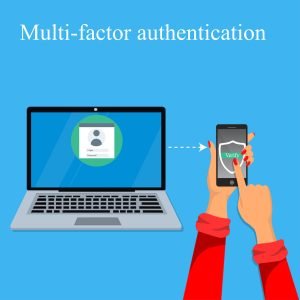 When a skilled hacker has the means, the motive, and the opportunity to break into your cyber system and wreak havoc, not much can stop or slow that person down. With one exception – multi-factor authentication, or MFA.
When a skilled hacker has the means, the motive, and the opportunity to break into your cyber system and wreak havoc, not much can stop or slow that person down. With one exception – multi-factor authentication, or MFA.
The only drawback of using this advanced tool, however, comes in the fact that the MFA – because of its comprehensive and in-depth safeguards – can also slow down legitimate users. But industry experts agree that the benefits in safety and security far outweigh this one minor negative.
The National Institute of Standards and Technology (NIST), part of the U.S. Department of Commerce, defines MFA as “a security enhancement that allows you to present two pieces of evidence – your credentials – when logging in to an account. Your credentials fall into any of these three categories: something you know (like a password or PIN), something you have (like a smart card), or something you are (like your fingerprint). Your credentials must come from two different categories to enhance security – so entering two different passwords would not be considered multi-factor.”NIST adds, “MFA is quite simple, and organizations are focusing more than ever on creating a smooth user experience. In fact, you probably already use it in some form. For example, you’ve used MFA if you’ve:
- swiped your bank card at the ATM and then entered your PIN (personal ID number)
- logged into a website that sent a numeric code to your phone, which you then entered to gain access to your account.”
The Pittsburgh Technology Council cites a professional cybersecurity expert (and former hacker), who said, “It is of the utmost importance to push through any obstacles and enable MFA on your environment. In addition to the monumental importance of having MFA, it is critical that you review your third-party systems that you do not control, especially those which contain sensitive company data, and find out whether MFA is available.”The added seconds it may require for users to register through two separate channels to access data amounts to virtually nothing in the long-term, when compared with the time, trauma, and treasure it would take to recover from a severe cybersecurity breach.For more insurance-related information on this and other topics, contact the professionals at The Reschini Group.Download these resources about Cyber Liability:• 10 Cyber Security Resolutions to Reduce Your Data Exposures• CI - Cyber Liability InsuranceContact The Reschini Group with your questions or concerns regarding cybersecurity.
Copyright 2021 The Reschini GroupThe Reschini Group provides these updates for information only, and does not provide legal advice. To make decisions regarding insurance matters, please consult directly with a licensed insurance professional or firm.
The Reschini Blog: Workers’ Comp and the Pandemic
Believe it or not, 2020 may not have been such a bad year for workers’ compensation insurers and insureds after all.
The National Council on Compensation Insurance (NCCI) looked at results through the third quarter of 2020 and extended those through the end of the year, using data from private carriers and state funds in 41 jurisdictions. The NCCI figures are calendar year and do not reflect the full costs of treating COVID-19 or other health conditions with long-term effects.
Overall for 2020, NCCI found:
- Worker claims due to COVID-19 have ranged from no symptoms to critical care, hospitalizations and, unfortunately, fatalities in some cases.
- The overall COVID-19 claims picture is by no means dire, with the majority of cases only requiring the injured worker to miss work and quarantine or recover at home.
- About 80% of the COVID claimants received very limited treatment, with 20% admitted to the hospital, representing the costliest and most complicated cases.
- The typical COVID inpatient stay lasts on average about seven to eight days.
- The majority of workers filing COVID workers’ compensation claims were women, at nearly 70%. These claimants are also generally older than the typical injured worker, with a large share age 55 years and older.
- Also, injured workers who contracted COVID-19 and required medical treatment were more likely to have comorbidities such as hypertension and chronic pulmonary disorder.
- COVID-19 claims were predominantly among frontline workers, first responders, healthcare and other essential workers, and teachers.
As the Delta variant surges across the U.S., it will be important to see how trends impacting workers’ compensation claims mirror or diverge from those seen from the initial round of COVID-19.For more information, contact the workers’ compensation experts at The Reschini Group.Download our resources about Workers Comp and COVID:
Copyright 2021 The Reschini GroupThe Reschini Group provides these updates for information only, and does not provide legal advice. To make decisions regarding insurance matters, please consult directly with a licensed insurance professional or firm.
Benefits Blog: Balancing the Employee’s Right to Privacy
 While having conversations, writing emails and going about business at home, the law provides privacy rights that restrict others from breaching one’s sense of security. However, when individuals go into a work setting, those rights are not as defined.
While having conversations, writing emails and going about business at home, the law provides privacy rights that restrict others from breaching one’s sense of security. However, when individuals go into a work setting, those rights are not as defined.
The law is unclear regarding the employer’s need to know versus the employee’s right to privacy, which can cause confusion and conflict in the workplace.When determining the legality of a potential privacy infringement, the employer’s need for conducting a particular type of surveillance will typically be weighed against the employee’s expectation of privacy. Generally, the employer’s privacy policies, past actions concerning privacy, and whether there was a legitimate reason for the search play a role in whether there was a violation of one’s privacy rights. In addition, if an employer does one of the following, he or she is typically in violation of the employee’s expectation of privacy:
- Deception—Requiring an employee to have a medical exam and then testing urine for drugs without the employee’s knowledge. After failing the drug test, the employee is fired.
- Secret monitoring of an intrusive nature— The employer installs a video surveillance camera above bathroom stalls to detect employee theft.
- Confidentiality violation—The employer assures employees that information from a health questionnaire will remain confidential, but then shares it with a third party.
- Intrusions into employee’s personal life— The employer fires an employee because he or she is a member of an activist group whose mission the company does not support.
Suggestions for employers on to handle this issue include:
- Have clear policies in your employee handbook relating to privacy, investigations and surveillance, including use of email and company-provided electronic devices.
- Update policies as needed and inform employees of updates.
- Have all employees read and sign the policy and any updates.
- Make sure you have a legitimate work-related purpose for monitoring employees or their communications.
- Know federal, state and local laws regarding privacy and consult legal counsel if you are unsure.
For additional perspective on balancing the employer’s right to know and the employee’s right to privacy, contact the Benefits team at The Reschini Group today.Download these resources about employee privacy rights:
Contact The Reschini Group with questions about privacy rights.
Copyright 2021 The Reschini GroupThe Reschini Group provides these updates for information only, and does not provide legal advice. To make decisions regarding insurance matters, please consult directly with a licensed insurance professional or firm.
Greg Gillen Joins the Reschini Group
Gregory Gillen joined The Reschini Group as an Insurance Advisor. Mr. Gillen has extensive sales experience across multiple industries. Dan will serve companies throughout western and central Pennsylvania.
The Reschini Blog: How to Avoid Being Zoom-Bombed
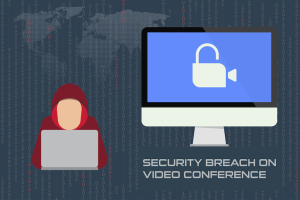 In the age of COVID-19, platforms like Zoom, Skype, Blackboard Collaborate, Microsoft Teams, and WebEx have been lifesavers for businesses, schools, and families. But, regrettably, the emergence and widespread adoption of these wonderful tools have also enabled the rise of those who would use them to break in uninvited, to steal information and data for their own purposes.
In the age of COVID-19, platforms like Zoom, Skype, Blackboard Collaborate, Microsoft Teams, and WebEx have been lifesavers for businesses, schools, and families. But, regrettably, the emergence and widespread adoption of these wonderful tools have also enabled the rise of those who would use them to break in uninvited, to steal information and data for their own purposes.
Such video-conferencing hijackers practice what has been dubbed “Zoom-bombing,” or the act of disrupting a virtual meeting with graphic or threatening messages or actions, including hate speech or pornographic images. Beyond being incredibly annoying and hurtful, such intrusions can also cause liability exposure based on the highly offensive harassment.Protecting innocent users against these disruptions is both a moral and legal obligation, as state and federal civil rights laws require businesses, organizations, and public entities to prevent discriminatory harassment. So how can you avoid being Zoom-bombed? Here are some suggestions:
- Know and test the technology first.
- Use options that require authenticated users only.
- Make all meetings private, with controlled admission.
- Only share the link to the room with those invited.
- Disable the "join before host" setting.
- Restrict screen-sharing options to the host only.
- Use the latest technology with updated security enhancements.
Our society, educational system, and business communities have survived the pandemic by leveraging the incredible power of these video-conferencing tools. Their staying power in a post-COVID world is guaranteed. That makes it all the more essential for users to remain vigilant in protecting themselves and those who they invite to join them online.Contact The Reschini Group for information on insurance-related matters affecting your organization.Copyright 2021 The Reschini GroupThe Reschini Group provides these updates for information only, and does not provide legal advice. To make decisions regarding insurance matters, please consult directly with a licensed insurance professional or firm.Source: https://www.shrm.org/resourcesandtools/legal-and-compliance/employment-law/pages/avoiding-zoom-bombing-in-the-new-age-of-meetings.aspx
The Reschini Blog: Nursing Home Turnover Presents Fresh Challenges
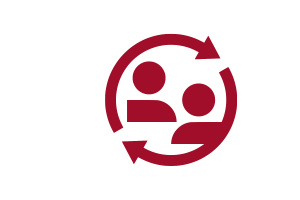 One of the more obvious ramifications of COVID-19 has been seen in high rates of staff turnover at nursing homes. But that trend had been in place long before the pandemic, with the median staff turnover at U.S. nursing homes of 94% and a mean rate of 128% in 2017 and 2018, according to industry journal Health Affairs.
One of the more obvious ramifications of COVID-19 has been seen in high rates of staff turnover at nursing homes. But that trend had been in place long before the pandemic, with the median staff turnover at U.S. nursing homes of 94% and a mean rate of 128% in 2017 and 2018, according to industry journal Health Affairs.
Mean rates exceeded 100% across all three primary employee types studied — registered nurses (140.7%), certified nursing assistants (129.1%), and licensed practical nurses (114.1%).With facilities suffering this rate of turnover, exposure to lawsuits and insurance claims asserting wrongful termination or unsafe on-the-job conditions – especially in the era of pandemic – could escalate. Take, for example, a claim filed in 2018 that was never pursued to resolution. The claimant’s attorney picks up the case again in 2021, but the specifics of the situation have been lost to memory and time.Refuting those challenges becomes difficult, if not impossible, opening the door to financial exposure for the nursing home facility.Situations like this – which are not as rare as one might think – only serve to emphasize the need for diligent, comprehensive, up-to-date record keeping regarding all employees, their performance records, any disciplinary actions required, and the details of how their employment ends. Only documentation like this can prevent or limit potential damages being charged to the employer.An escalating rate of turnover cannot be used as an excuse for substandard record-keeping.Contact The Reschini Group for information on insurance-related matters affecting your organization.Download these resources about turnover and employment tracking:
Contact The Reschini Group with your questions or concerns regarding a need for Employment Practices Liability Insurance (EPLI).
Copyright 2021 The Reschini GroupThe Reschini Group provides these updates for information only, and does not provide legal advice. To make decisions regarding insurance matters, please consult directly with a licensed insurance professional or firm.Source: https://skillednursingnews.com/2021/03/nursing-homes-have-94-staff-turnover-rate-with-even-higher-churn-at-low-rated-facilities/
Benefits Blog: Be a Smart Health Care Consumer
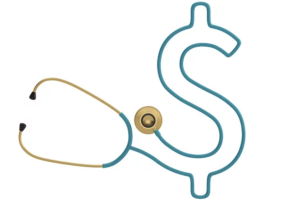 They used to say there were only two sure things in life – death and taxes. But another sure thing could be added today – rising health care costs.
They used to say there were only two sure things in life – death and taxes. But another sure thing could be added today – rising health care costs.
That makes it imperative for every individual to become a smarter consumer of health care, by taking charge of your care and coverage, asking more questions, and doing more independent research. Here are some specific steps:
Control out-of-pocket health care costs by carefully reviewing your health insurance plan options and selecting the ones that best meet the needs of you and your family. Those needing more chronic care and medications may want to choose a lower deductible plan, while those younger and healthier needing less care could potentially get by with a higher deductible option.Assert your rights as a patient and ask more questions of your doctor and pharmacist, such as:
- Why is this treatment necessary?
- How much will this treatment cost?
- Are there equally effective options that cost less?
- What is the current procedural terminology (CRT) code for this treatment, so that I can comparison shop my options?
- How can I improve my condition?
- Why are you suggesting this specific dosage?
- Is this prescription on my insurance plan’s approved list, or is this a specialty drug?
- Can you recommend a lower-cost or generic substitute?
Make every effort to choose in-network doctors when possible. Health care providers within your plan’s network typically cost less than those out-of-network. When selecting a plan, make sure your preferred doctors and hospitals are within the plan’s approved network.Seek outpatient care when available, without sacrificing quality of care. By avoiding being admitted to the hospital, the cost of your care goes down significantly. Only select an outpatient option when the proper level of care can still be provided.For more information on becoming a smarter health care consumer, contact the Benefits team at The Reschini Group today.Download these resources about reducing health care costs:How to Lower Health Care Costs Take Action - Preventive Care and Your Health Care Costs Take Action - Shop Around for Health Care
Copyright 2021 The Reschini GroupThe Reschini Group provides these updates for information only, and does not provide legal advice. To make decisions regarding insurance matters, please consult directly with a licensed insurance professional or firm.
The Reschini Blog: Cybercrime Impacts All Industries
 Working in IT today is like running a marathon sprint.
Working in IT today is like running a marathon sprint.
Not only do the digital professionals need to keep their systems and users running smoothly at a baseline level, they also need to stay up-to-date on new applications and software packages and how they could be used to advance the growth of their organizations.
And then there’s the ever-present specter of cybercrime – an unending and constantly expanding web of innovative and malicious attempts to steal information, hold data for ransom, and generally take control of the digital identity of companies. What’s worse, no industry is immune to these dark forces, who can wreak havoc and extort enormous financial damages.According to the Pittsburgh Technology Council, most CEO surveys rank cybersecurity threats as a top-five risk, regardless of industry type. CEOs care about data breaches and ransomware attacks because those attacks have become so common, regardless of organizational size or IT staff experience. Furthermore, CEOs know that a ransomware infection or a data breach can put the very life of their organizations at risk.IT teams have trouble keeping a current and standardized set of security best practices, because to do so – with proper patches and policies amid a continuously changing environment – is time consuming, expensive, and downright difficult. One solution comes in the form of enterprise cloud infrastructure platforms, which offer a secure-by-default cloud experience with best-in-class security features incorporated from the start.Using advanced tools like this can free internal IT staffs, since they only need to work with the cloud infrastructure provider to select and configure features most relevant to the organization’s needs and vulnerabilities. Those IT professionals can then spend their time more efficiently, working on strategic projects while reducing exposure to cybersecurity issues.Keeping the bad guys at bay online doesn’t have to be a marathon sprint, where the best efforts simply can’t keep running at full capacity. You can bring your cybersecurity exposure under better control, thereby improving your insurance coverage against losses.The experts at The Reschini Group can provide specific guidance in this area. Contact us today to learn more.
Copyright 2021 The Reschini GroupThe Reschini Group provides these updates for information only, and does not provide legal advice. To make decisions regarding insurance matters, please consult directly with a licensed insurance professional or firm.
The Reschini Blog: Noise Monitoring a Vital Concern
 The very process of manufacturing – especially heavy manufacturing – carries with it some inherent variables that can cause damage to those working onsite. Most companies maintain diligent safety practices and procedures to protect workers from falls, hand injuries, accident enclosures, and the like.
The very process of manufacturing – especially heavy manufacturing – carries with it some inherent variables that can cause damage to those working onsite. Most companies maintain diligent safety practices and procedures to protect workers from falls, hand injuries, accident enclosures, and the like.
The dangers of excessive noise must be in that same discussion.
The Reschini Group has specialists who consult and advise client companies about the importance of noise monitoring, including use of audio dosimetry at manufacturing facilities. Our team works with manufacturers to conduct these tests, to see the impact of onsite noise and how best to safeguard those exposed to it.Central to these efforts is guidance from the federal Occupational Safety and Health Administration (OSHA), and its requirements for establishing a Hearing Conservation Program. According to the OSHA website, this includes noise monitoring, audiometric testing, hearing protection, training, and recordkeeping. OSHA requires companies to implement a hearing conservation program when noise exposure is at or above 85 decibels averaged over 8 working hours.Exposure to loud noise kills the nerve endings in the inner ear, with prolonged exposure causing more dead nerve endings and permanent hearing loss that cannot be corrected with surgery or medicine. Noise-induced hearing loss limits your ability to hear high frequency sounds and understand speech, which seriously impairs your ability to communicate. Hearing aids may help, but they do not restore your hearing to normal.Hearing conservation programs are meant to prevent initial occupational hearing loss, preserve and protect remaining hearing, and equip workers with the knowledge and hearing protection devices necessary to safeguard themselves. Paying the proper level of attention to on-the-job noise issues also makes sense regarding avoiding exposure to lawsuits and insurance claims.The team at The Reschini Group features experts in working with client companies to lessen this exposure. Contact us today to learn more.
Related Resource from The Reschini Group
- Noise hazard awareness sheet to share with employees: PiS - Workplace Noise Hazards
Contact The Reschini Group with your questions or concerns regarding Noise Hazards.
Copyright 2021 The Reschini GroupThe Reschini Group provides these updates for information only, and does not provide legal advice. To make decisions regarding insurance matters, please consult directly with a licensed insurance professional or firm.
Benefits Blog: Benefits Adjustments Based on COVID-19
 As the COVID-19 pandemic continues, national benefits experts have determined that 20% of employers need support in updating their benefits programs to accommodate the changes the virus has created. Here are some of the most common changes being considered for 2021 and beyond.
As the COVID-19 pandemic continues, national benefits experts have determined that 20% of employers need support in updating their benefits programs to accommodate the changes the virus has created. Here are some of the most common changes being considered for 2021 and beyond.
Potential Cost Increases and Plan Designs – Health care premium costs have increased at a steady rate over the past few years, with the most recent average increase being around 6%. Despite many health care providers having waived fees associated with COVID-19 testing, those costs will likely trickle down in the long run.Employers will need to evaluate their unique circumstances and consider whether they need to shift some of their cost-sharing burden with a new plan design.Mental Health Benefits – According to a survey from a major mental health provider, nearly 7 in 10 employees cited the COVID-19 pandemic as the most stressful time in their careers. As employees return to work, many are experiencing financial hardship, balancing new caregiving responsibilities, managing concerns over their physical and mental well-being. Employers should consider offering or revamping an existing employee assistance program (EAP) and expanding mental health resources.Flexible Workplace Benefits – Even before the COVID-19 pandemic, employers were feeling the pressure to provide flexible workplace benefits. As such, employees are likely looking for expanded flexible work benefits, including:- Work-from-home – While not always feasible, employees who may already be working from home due to the pandemic or are equally as productive from home may expect to continue to do so.- Flexible work hours – Flexible work hours or alternative schedules during these uncertain times and moving forward may help employees balance their various responsibilities, and prioritize their health.Virtual Open Enrollment – Traditionally held in the office during a specific time frame, organizations could instead hold town hall meetings and provide regular communications on open enrollment, and plan to conduct it virtually as necessary.For more information surrounding the employee benefits landscape post-coronavirus or how to prepare for an alternative open enrollment approach, today.Related Resources from The Reschini Group:Idea sheet regarding helping reduce COVID-19 related stress in the workforce. Easing Employee Stress Surrounding the Coronavirus Pandemic_ The EAP and Return to Work plans post pandemic - a starting guide. Post-coronavirus Return-to-Work Plans and EAPs
Copyright 2021 The Reschini GroupThe Reschini Group provides these updates for information only, and does not provide legal advice. To make decisions regarding insurance matters, please consult directly with a licensed insurance professional or firm.
